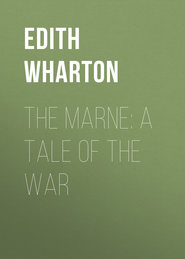По всем вопросам обращайтесь на: info@litportal.ru
(©) 2003-2024.
✖
In Morocco
Настройки чтения
Размер шрифта
Высота строк
Поля
Sometimes, on occasion, it does mean that: as, for instance, when a procession passes bearing the gifts for a Jewish wedding. The gray crowd makes way for a group of musicians in brilliant caftans, and following them comes a long file of women with uncovered faces and bejewelled necks, balancing on their heads the dishes the guests have sent to the feast—kouskous, sweet creams and syrups, "gazelles' horns" of sugar and almonds—in delicately woven baskets, each covered with several squares of bright gauze edged with gold. Then one remembers the marketing of the Lady of "The Three Calendars," and Fez again becomes the Bagdad of Al Raschid.
But when no exceptional events, processions, ceremonies and the like brighten the underworld of the souks, their look is uniformly melancholy. The gay bazaars, the gaily-painted houses, the flowers and flute-playing of North Africa, are found in her Mediterranean ports, in contact with European influences. The farther west she extends, the more she becomes self-contained, sombre, uninfluenced, a gloomy fanatic with her back to the walls of the Atlantic and the Atlas. Color and laughter lie mostly along the trade-routes, where the peoples of the world come and go in curiosity and rivalry. This ashen crowd swarming gloomily through the dark tunnels represents the real Moghreb that is close to the wild tribes of the "hinterland" and the grim feudal fortresses of the Atlas. How close, one has only to go out to Sefrou on a market-day to see.
Sefrou is a military outpost in an oasis under the Atlas, about forty miles south of Fez. To most people the word "oasis" evokes palms and sand; but though Morocco possesses many oases it has no pure sand and few palms. I remember it as a considerable event when I discovered one from my lofty window at Bou-Jeloud.
The bled is made of very different stuff from the sand-ocean of the Sahara. The light plays few tricks with it. Its monotony is wearisome rather than impressive, and the fact that it is seldom without some form of dwarfish vegetation makes the transition less startling when the alluvial green is finally reached. One had always half expected it, and it does not spring at a djinn's wave out of sterile gold.
But the fact brings its own compensations. Moroccan oases differ one from another far more than those of South Algeria and Tunisia. Some have no palms, others but a few, others are real palm-oases, though even in the south (at least on the hither side of the great Atlas) none spreads out a dense uniform roofing of metal-blue fronds like the date-oases of Biskra or Tozeur. As for Sefrou, which Foucauld called the most beautiful oasis of Morocco, it is simply an extremely fertile valley with vineyards and orchards stretching up to a fine background of mountains. But the fact that it lies just below the Atlas makes it an important market-place and centre of caravans.
Though so near Fez it is still almost on the disputed border between the loyal and the "unsubmissive" tribes, those that are Blad-Makhzen (of the Sultan's government) and those that are against it. Until recently, therefore, it has been inaccessible to visitors, and even now a strongly fortified French post dominates the height above the town. Looking down from the fort, one distinguishes, through masses of many-tinted green, a suburb of Arab houses in gardens, and below, on the river, Sefrou itself, a stout little walled town with angle-towers defiantly thrust forth toward the Atlas. It is just outside these walls that the market is held.
It was swarming with hill-people the day we were there, and strange was the contrast between the crowd inside the circle of picketed horses and the white-robed cockneys from Rabat who fill the market-place of Salé. Here at last we were in touch with un-Arab Morocco, with Berbers of the bled and the hills, whose women know no veils and no seclusion, and who, under a thin surface of Mahometanism, preserve their old stone and animal worship, and all the gross fetichistic beliefs from which Mahomet dreamed of freeing Africa.
The men were lean and weather-bitten, some with negroid lips, others with beaked noses and gaunt cheek-bones, all muscular and fierce-looking. Some were wrapped in the black cloaks worn by the Blue Men of the Sahara,[17 - So called because of the indigo dye of their tunics, which leaves a permanent stain on their bodies.] with a great orange sun embroidered on the back; some tunicked like the Egyptian fellah, under a rough striped outer garment trimmed with bright tufts and tassels of wool. The men of the Rif had a braided lock on the shoulder, those of the Atlas a ringlet over each ear, and brown woollen scarfs wound round their temples, leaving the shaven crown bare.
The women, squatting among their kids and poultry and cheeses, glanced at us with brilliant hennaed eyes and smiles that lifted their short upper lips maliciously. Their thin faces were painted in stripes and patterns of indigo. Silver necklets covered their throats, long earrings dangled under the wool-embroidered kerchiefs bound about their temples with a twist of camel's hair, and below the cotton shifts fastened on their shoulders with silver clasps their legs were bare to the knee, or covered with leather leggings to protect them from the thorny bled.
They seemed abler bargainers than the men, and the play of expression on their dramatic and intensely feminine faces as they wheedled the price of a calf out of a fierce hillsman, or haggled over a heap of dates that a Jew with greasy ringlets was trying to secure for his secret distillery, showed that they knew their superiority and enjoyed it.
Jews abounded in the market-place and also in the town. Sefrou contains a large Israelite colony, and after we had wandered through the steep streets, over gushing waterfalls spanned by "ass-backed" Spanish bridges, and through a thatched souk smelling strong of camels and the desert, the French commissioner (the only European in Sefrou) suggested that it might interest us to visit the Mellah.
It was our first sight of a typical Jewish quarter in Africa. The Mellah of Fez was almost entirely destroyed during the massacres of 1912 (which incidentally included a pogrom), and its distinctive character, happily for the inhabitants, has disappeared in the rebuilding. North African Jews are still compelled to live in ghettos, into which they are locked at night, as in France and Germany in the Middle Ages; and until lately the men have been compelled to go unarmed, to wear black gabardines and black slippers, to take off their shoes when they passed near a mosque or a saint's tomb, and in various other ways to manifest their subjection to the ruling race. Nowhere else do they live in conditions of such demoralizing promiscuity as in some of the cities of Morocco. They have so long been subject to unrestricted extortion on the part of the Moslems that even the wealthy Jews (who are numerous) have sunk to the habits and appearance of the poorest; and Sefrou, which has come so recently under French control, offers a good specimen of a Mellah before foreign sanitation has lighted up its dark places.
Dark indeed they were. After wandering through narrow and malodorous lanes, and slipping about in the offal of the souks, we were suddenly led under an arch over which should have been written "All light abandon—" and which made all we had seen before seem clean and bright and airy.
The beneficent African sun dries up and purifies the immemorial filth of Africa; where that sun enters there is none of the foulness of damp. But into the Mellah of Sefrou it never comes, for the streets form a sort of subterranean rabbit-warren under the upper stories of a solid agglomeration of tall houses—a buried city lit even at midday by oil-lamps hanging in the goldsmiths' shops and under the archways of the black and reeking staircases.
It was a Jewish feast-day. The Hebrew stalls in the souks were closed, and the whole population of the Mellah thronged its tunnels in holiday dress. Hurrying past us were young women with plump white faces and lovely eyes, turbaned in brilliant gauzes, with draperies of dirty curtain muslin over tawdry brocaded caftans. Their paler children swarmed about them, little long-earringed girls like wax dolls dressed in scraps of old finery, little boys in tattered caftans with long-lashed eyes and wily smiles; and, waddling in the rear, their unwieldy grandmothers, huge lumps of tallowy flesh who were probably still in the thirties.
With them were the men of the family, in black gabardines and skull-caps: sallow striplings, incalculably aged ancestors, round-bellied husbands and fathers bumping along like black balloons; all hastening to the low doorways dressed with lamps and paper garlands behind which the feast was spread.
One is told that in cities like Fez and Marrakech the Hebrew quarter conceals flowery patios and gilded rooms with the heavy European furniture that rich Jews delight in. Perhaps even in the Mellah of Sefrou, among the ragged figures shuffling past us, there were some few with bags of gold in their walls and rich stuffs hid away in painted coffers; but for patios and flowers and daylight there seemed no room in the dark bolgia they inhabit. No wonder the babies of the Moroccan ghettos are nursed on date-brandy, and their elders doze away to death under its consoling spell.
VI
THE LAST GLIMPSE
It is well to bid good-by to Fez at night—a moonlight night for choice.
Then, after dining at the Arab inn of Fez Eldjid—where it might be inconvenient to lodge, but where it is extremely pleasant to eat kouskous under a grape-trellis in a tiled and fountained patio—this pleasure over, one may set out on foot and stray down the lanes toward Fez Elbali.
Not long ago the gates between the different quarters of the city used to be locked every night at nine o'clock, and the merchant who went out to dine in another part of the town had to lodge with his host. Now this custom has been given up, and one may roam about untroubled through the old quarters, grown as silent as the grave after the intense life of the bazaars has ceased at nightfall.
Nobody is in the streets: wandering from ghostly passage to passage, one hears no step but that of the watchman with staff and lantern. Presently there appears, far off, a light like a low-flying firefly; as it comes nearer, it is seen to proceed from the Mellah lamp of open-work brass that a servant carries ahead of two merchants on their way home from Elbali. The merchants are grave men: they move softly and slowly on their fat slippered feet, pausing from time to time in confidential talk. At last they stop before a house wall with a low blue door barred by heavy hasps of iron. The servant lifts the lamp and knocks. There is a long delay; then, with infinite caution, the door is opened a few inches, and another lifted light shines faintly on lustrous tiled walls, and on the face of a woman slave who quickly veils herself. Evidently the master is a man of standing, and the house well guarded. The two merchants touch each other on the right shoulder, one of them passes in, and his friend goes on through the moonlight, his servant's lantern dancing ahead.
But here we are in an open space looking down one of the descents to El Attarine. A misty radiance washes the tall houses, the garden-walls, the archways; even the moonlight does not whiten Fez, but only turns its gray to tarnished silver. Overhead in a tower window a single light twinkles: women's voices rise and fall on the roofs. In a rich man's doorway slaves are sleeping, huddled on the tiles. A cock crows from somebody's dunghill; a skeleton dog prowls by for garbage.
Everywhere is the loud rush or the low crooning of water, and over every wall comes the scent of jasmine and rose. Far off, from the red purgatory between the walls, sounds the savage thrum-thrum of a negro orgy; here all is peace and perfume. A minaret springs up between the roof like a palm, and from its balcony the little white figure bends over and drops a blessing on all the loveliness and all the squalor.
IV
MARRAKECH
I
THE WAY THERE
There are countless Arab tales of evil Djinns who take the form of sandstorms and hot winds to overwhelm exhausted travellers.
In spite of the new French road between Rabat and Marrakech the memory of such tales rises up insistently from every mile of the level red earth and the desolate stony stretches of the bled. As long as the road runs in sight of the Atlantic breakers they give the scene freshness and life; but when it bends inland and stretches away across the wilderness the sense of the immensity and immobility of Africa descends on one with an intolerable oppression.
The road traverses no villages, and not even a ring of nomad tents is visible in the distance on the wide stretches of arable land. At infrequent intervals our motor passed a train of laden mules, or a group of peasants about a well, and sometimes, far off, a fortified farm profiled its thick-set angle-towers against the sky, or a white koubba floated like a mirage above the brush; but these rare signs of life intensified the solitude of the long miles between.
At midday we were refreshed by the sight of the little oasis around the military-post of Settat. We lunched there with the commanding officer, in a cool Arab house about a flowery patio; but that brief interval over, the fiery plain began again. After Settat the road runs on for miles across the waste to the gorge of the Oued Ouem; and beyond the river it climbs to another plain so desperate in its calcined aridity that the prickly scrub of the wilderness we had left seemed like the vegetation of an oasis. For fifty kilometres the earth under our wheels was made up of a kind of glistening red slag covered with pebbles and stones. Not the scantest and toughest of rock-growths thrust a leaf through its brassy surface; not a well-head or a darker depression of the rock gave sign of a trickle of water. Everything around us glittered with the same unmerciful dryness.
A long way ahead loomed the line of the Djebilets, the Djinn-haunted mountains guarding Marrakech on the north. When at last we reached them the wicked glister of their purple flanks seemed like a volcanic upheaval of the plain. For some time we had watched the clouds gathering over them, and as we got to the top of the defile rain was falling from a fringe of thunder to the south. Then the vapours lifted, and we saw below us another red plain with an island of palms in its centre. Mysteriously, from the heart of the palms, a tower shot up, as if alone in the wilderness; behind it stood the sun-streaked cliffs of the Atlas, with snow summits appearing and vanishing through the storm.
As we drove downward the rock gradually began to turn to red earth fissured by yellow streams, and stray knots of palms sprang up, lean and dishevelled, about well-heads where people were watering camels and donkeys. To the east, dominating the oasis, the twin peaked hills of the Ghilis, fortified to the crest, mounted guard over invisible Marrakech; but still, above the palms, we saw only that lonely and triumphant tower.
Presently we crossed the Oued Tensif on an old bridge built by Moroccan engineers. Beyond the river were more palms, then olive-orchards, then the vague sketch of the new European settlement, with a few shops and cafés on avenues ending suddenly in clay pits, and at last Marrakech itself appeared to us, in the form of a red wall across a red wilderness.
We passed through a gate and were confronted by other ramparts. Then we entered an outskirt of dusty red lanes bordered by clay hovels with draped figures slinking by like ghosts. After that more walls, more gates, more endlessly winding lanes, more gates again, more turns, a dusty open space with donkeys and camels and negroes; a final wall with a great door under a lofty arch—and suddenly we were in the palace of the Bahia, among flowers and shadows and falling water.
II
THE BAHIA
Whoever would understand Marrakech must begin by mounting at sunset to the roof of the Bahia.
Outspread below lies the oasis-city of the south, flat and vast as the great nomad camp it really is, its low roofs extending on all sides to a belt of blue palms ringed with desert. Only two or three minarets and a few noblemen's houses among gardens break the general flatness; but they are hardly noticeable, so irresistibly is the eye drawn toward two dominant objects—the white wall of the Atlas and the red tower of the Koutoubya.
Foursquare, untapering, the great tower lifts its flanks of ruddy stone. Its large spaces of unornamented wall, its triple tier of clustered openings, lightening as they rise from the severe rectangular lights of the first stage to the graceful arcade below the parapet, have the stern harmony of the noblest architecture. The Koutoubya would be magnificent anywhere; in this flat desert it is grand enough to face the Atlas.
The Almohad conquerors who built the Koutoubya and embellished Marrakech dreamed a dream of beauty that extended from the Guadalquivir to the Sahara; and at its two extremes they placed their watch-towers. The Giralda watched over civilized enemies in a land of ancient Roman culture; the Koutoubya stood at the edge of the world, facing the hordes of the desert.
The Almoravid princes who founded Marrakech came from the black desert of Senegal; themselves were leaders of wild hordes. In the history of North Africa the same cycle has perpetually repeated itself. Generation after generation of chiefs have flowed in from the desert or the mountains, overthrown their predecessors, massacred, plundered, grown rich, built sudden palaces, encouraged their great servants to do the same; then fallen on them, and taken their wealth and their palaces. Usually some religious fury, some ascetic wrath against the self-indulgence of the cities, has been the motive of these attacks; but invariably the same results followed, as they followed when the Germanic barbarians descended on Italy. The conquerors, infected with luxury and mad with power, built vaster palaces, planned grander cities; but Sultans and Viziers camped in their golden houses as if on the march, and the mud huts of the tribesmen within their walls were but one degree removed from the mud-walled tents of the bled.
This was more especially the case with Marrakech, a city of Berbers and blacks, and the last outpost against the fierce black world beyond the Atlas from which its founders came. When one looks at its site, and considers its history, one can only marvel at the height of civilization it attained.
The Bahia itself, now the palace of the Resident General, though built less than a hundred years ago, is typical of the architectural megalomania of the great southern chiefs. It was built by Ba-Ahmed, the all-powerful black Vizier of the Sultan Moulay-el-Hassan.[18 - Moulay-el-Hassan reigned from 1873 to 1894.] Ba-Ahmed was evidently an artist and an archæologist. His ambition was to re-create a Palace of Beauty such as the Moors had built in the prime of Arab art, and he brought to Marrakech skilled artificers of Fez, the last surviving masters of the mystery of chiselled plaster and ceramic mosaics and honeycombing of gilded cedar. They came, they built the Bahia, and it remains the loveliest and most fantastic of Moroccan palaces.
Court within court, garden beyond garden, reception halls, private apartments, slaves' quarters, sunny prophets' chambers on the roofs and baths in vaulted crypts, the labyrinth of passages and rooms stretches away over several acres of ground. A long court enclosed in pale-green trellis-work, where pigeons plume themselves about a great tank and the dripping tiles glitter with refracted sunlight, leads to the fresh gloom of a cypress garden, or under jasmine tunnels bordered with running water; and these again open on arcaded apartments faced with tiles and stucco-work, where, in a languid twilight, the hours drift by to the ceaseless music of the fountains.
The beauty of Moroccan palaces is made up of details of ornament and refinements of sensuous delight too numerous to record; but to get an idea of their general character it is worth while to cross the Court of Cypresses at the Bahia and follow a series of low-studded passages that turn on themselves till they reach the centre of the labyrinth. Here, passing by a low padlocked door leading to a crypt, and known as the "Door of the Vizier's Treasure-House," one comes on a painted portal that opens into a still more secret sanctuary: The apartment of the Grand Vizier's Favourite.
This lovely prison, from which all sight and sound of the outer world are excluded, is built about an atrium paved with disks of turquoise and black and white. Water trickles from a central vasca of alabaster into a hexagonal mosaic channel in the pavement. The walls, which are at least twenty-five feet high, are roofed with painted beams resting on panels of traceried stucco in which is set a clerestory of jewelled glass. On each side of the atrium are long recessed rooms closed by vermilion doors painted with gold arabesques and vases of spring flowers; and into these shadowy inner rooms, spread with rugs and divans and soft pillows, no light comes except when their doors are opened into the atrium. In this fabulous place it was my good luck to be lodged while I was at Marrakech.
In a climate where, after the winter snow has melted from the Atlas, every breath of air for long months is a flame of fire, these enclosed rooms in the middle of the palaces are the only places of refuge from the heat. Even in October the temperature of the favourite's apartment was deliciously reviving after a morning in the bazaars or the dusty streets, and I never came back to its wet tiles and perpetual twilight without the sense of plunging into a deep sea-pool.










